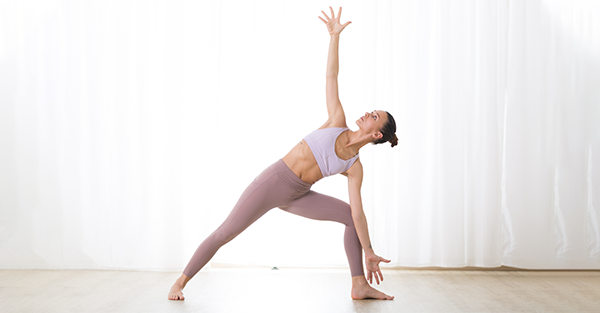
5 Yoga Poses For Increased Mobility
Mobility is the ability to control the movement in your joints, muscles, and tendons throughout their entire available ranges of motion. Mobility is similar to flexibility, but mobility incorporates both flexibility and strength. Mobility training can help reduce risk of injury and optimize performance as muscles perform better and can contract more forcefully when they are able to reach their full ranges of motion. One popular way to increase mobility is through yoga poses or “asanas.” With each of these movements, you can hold the pose for at least 30 seconds and up to 2-3 minutes daily to improve mobility.
Cat-Cow Pose (Chakravakasana)
Cat-Cow pose is a great way to improve spinal mobility and abdominal strength. You can work on abdominal strengthening by focusing on contracting the transverse abdominis with the “cat” portion of the pose. This pose can also help with lumbo-pelvic dissociation, or the mobility between your lower back and your pelvis.
How to do this move:
Start in a table top position on your hands and knees with your wrists underneath your shoulders and your knees underneath your hips. Then, arch the back up toward the ceiling (cat) while focusing on bringing your belly button in toward the spine. You should feel a stretch all along your back. Then, arch your back the opposite way (cow), bringing your belly toward the floor.
Downward Facing Dog (Adho Mukha Svanasana)
Downward Facing Dog works on the posterior chain, including the gluteals, hamstrings, and calves. Posterior chain mobility is important for maintaining posture and balance. This pose can also help with ankle mobility and shoulder stability.
How to do this move:
Start in a table top position on your hands and knees with your wrists underneath your shoulders and your knees underneath your hips. Then, tuck your toes and lift your hips toward the sky. Try to bring your heels as close to the floor as you can. Try to push evenly between hands and your feet. You should feel a stretch throughout the back of the legs.
Thread the Needle (Parsva Balasana)
Thread the Needle pose works on both shoulder and thoracic mobility, which are important for both posture and most sports performance, including golfing, running, tennis, and volleyball, to name a few. This pose helps to increase thoracic rotation and posterior shoulder mobility.
How to do this move:
Start in a table top position on your hands and knees with your wrists underneath your shoulders and your knees underneath your hips. Then, reach the right arm out to the side and then slide the right arm underneath your left arm with the palm facing up, twisting through your torso. Your right shoulder should come down to the mat and you can rest your right ear or cheek on the mat as well. Hold and then repeat on the opposite side.
Garland Pose (Malasana)
Garland pose, also known as “deep squat,” targets a variety of body parts including the hips, groin, knees, ankles, and torso. This pose can help to improve flexion mobility through the hips, knees and ankles as well as extension mobility though the torso.
How to do this move:
Standing on your mat, bring your feet slightly wider than hips-distance apart. Bend through the knees, bringing your buttocks toward the floor coming into a squat. Toes can be facing slightly outward. If your heels do not stay on the ground, feel free to add a prop or towel underneath the heels to help you relax. Bring your forearms to the insides of your thighs and with your hands in a “prayer” position, slightly push your forearms into your thighs for a deeper stretch through the groin.
Gate Pose (Parighasana)
Gate pose is primarily a stretch for your side body, including the intercostal muscles between your ribs, the obliques, and the latissimus muscles. It can help to improve core stability and mobility throughout the spine.
How to do this move:
Starting in a kneeling position, extend your right leg out to the side, keeping your foot flat on the ground. Then, reach your left arm up straight toward the sky and slowly lean toward the right over your extended leg, keeping your palm facing the right side. You can use your right hand as support on your right leg for balance. Hold and repeat on the opposite side.
These are just a few yoga poses that can improve mobility. If you have any questions on mobility training or how it may affect your performance, feel free to contact our trained physical therapists at Therapydia.